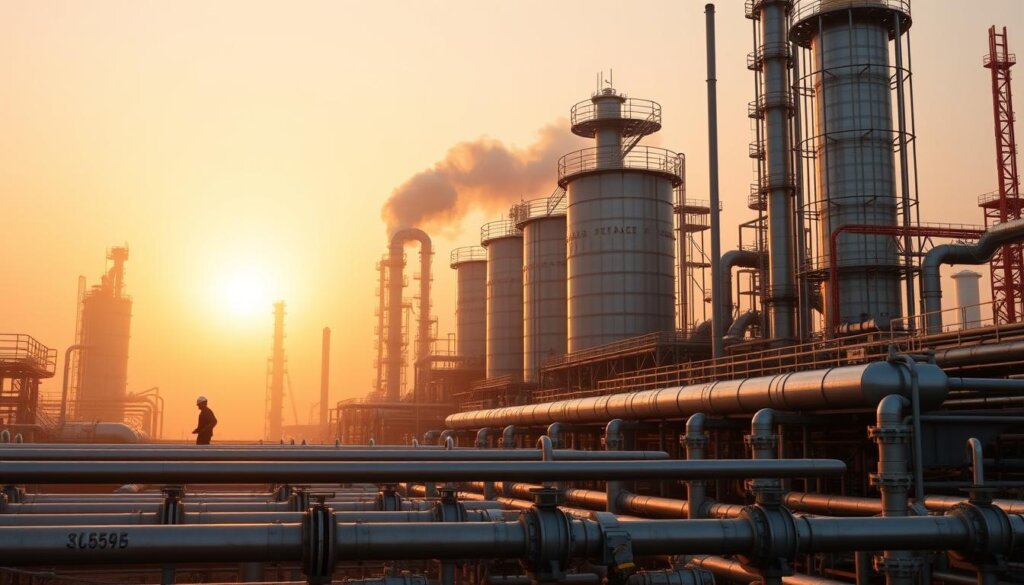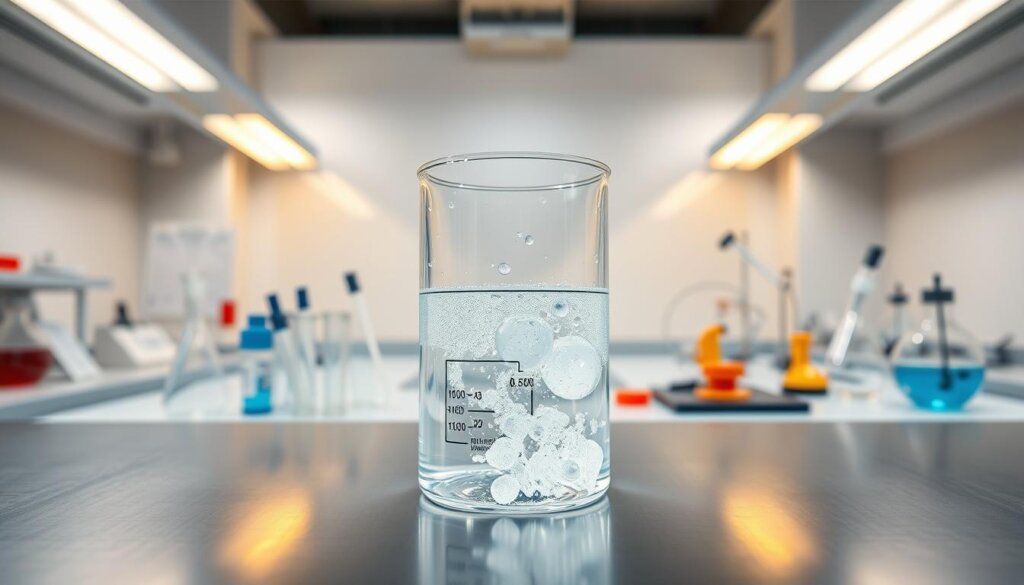Nearly all current production comes from converting fossil fuels, and that fact shapes how people plan for a cleaner future. This scale shows why choices matter for energy policy in Malaysia and around the world.
Hydrogen stands out as a light, versatile gas that helps industry today and promises more as supply shifts. Proven roles include refining oil and making ammonia for fertilizer. Newer pathways power fuel cells and combined heat and power systems.
Wellness Group frames these points in plain language and keeps expectations clear. They note present limits in supply, cost, and infrastructure while pointing to long-term clean energy goals.
Local support is available for Malaysian businesses and stakeholders. Wellness Group answers questions Monday–Friday 9:30 am–6:30 pm and weekends 10 am–5 pm. Contact via WhatsApp at +60123822655 for tailored guidance.
Key Takeaways
- Most output today comes from fossil fuels, which affects decarbonization plans.
- Top practical roles: petroleum refining, ammonia production, and energy systems like fuel cells.
- Clean energy potential exists but depends on supply, cost, and new infrastructure.
- Wellness Group offers local advice for Malaysia and can help weigh options.
- Readers will find safety, storage, and “color” production notes later in the article.
Hydrogen at a glance: properties, safety, and why it matters today
Hydrogen’s basic traits—light weight, invisibility, and energy density—shape its practical uses today. This colorless, odorless gas reacts with oxygen to form water (2 H2 + O2 → 2 H2O) and releases about 142 MJ/kg. That clean reaction explains why it features in many energy conversations.
From colorless gas to clean energy conversations
The high energy-by-mass of hydrogen makes it attractive as an alternative fuel and energy carrier. It produces no direct CO2 when used at point of use, so industries consider it for power, heat, and transport.
Combustion, flammability, and handling considerations
Safety drives design. Hydrogen forms explosive mixtures with air from about 4% to 74% and has an autoignition near 500°C. Flames may be faint blue or UV and hard to spot in daylight.
Low density and fast diffusion complicate compression and storage. Leaks can pass through small gaps, and materials compatibility matters to prevent embrittlement. Good ventilation, sensors, and visible flame detectors reduce risks.
- Key controls: leak detection, ventilation, compatible materials, and trained staff.
- Storage options include compression, liquefaction, or carrier-based systems for different sites.
For local guidance on handling and practical applications, contact Wellness Group during business hours (Mon–Fri 9:30 am–6:30 pm; Sat–Sun 10 am–5 pm) via WhatsApp at +60123822655.
Understanding hydrogen production: grey, blue, and green pathways
Different production routes shape carbon impact, costs, and where hydrogen fits in Malaysia’s energy plans. Each pathway uses distinct inputs and has trade-offs for emissions and price.
Grey hydrogen from natural gas and SMR
Grey hydrogen is chiefly made by steam methane reforming (SMR) using natural gas. It costs less today and supplies most markets, but it vents CO2 unless captured.
Blue hydrogen with carbon capture and its debated impact
Blue hydrogen pairs SMR with carbon capture and storage. In practice, studies show only modest carbon reductions—about a 12% drop versus grey in one recent analysis—largely due to capture limits and upstream methane leakage.
Green hydrogen via electrolysis powered by wind and solar
Green hydrogen splits water using electrolysis powered by wind or solar. When electricity comes from verified renewable energy, operational emissions are near zero.
- Planners weigh levelized cost, carbon intensity, and inputs like water, electricity, and natural gas.
- Near term: many markets rely on fossil fuels for supply and economics.
- Long term: scaling wind and solar can lower costs and enable low-carbon production locally, improving energy security and cutting import dependence.
For Malaysian project scoping and practical advice, message +60123822655 during business hours (Mon–Fri 9:30 am–6:30 pm; Sat–Sun 10 am–5 pm).
What are the 3 main uses of hydrogen?
Hydrogen today serves three clear markets that drive most demand. Each has distinct drivers, risks, and investment needs for Malaysia.
Petroleum refining: Hydrogen supports hydrotreating and hydrocracking steps in oil processing. It helps remove sulfur and improve fuel yields, so refineries rely on steady supply.
Ammonia and fertilizers: Hydrogen is the essential feedstock for ammonia, which underpins global food production. This role links energy supply to agriculture and export markets.
Energy applications: As an energy source, hydrogen fuels fuel cells and combined heat and power systems. It can serve as backup power, grid balancing, and transport fuel as infrastructure grows.
| Use | Primary role | Key benefit | Malaysia note |
|---|---|---|---|
| Petroleum refining | Hydrotreating & hydrocracking | Cleaner fuels, better product mix | Existing refineries can adapt with supply planning |
| Ammonia production | H2 feedstock for Haber-Bosch | Vital for fertilizer and food security | Opportunities for local fertilizer plants |
| Energy systems | Fuel cells, CHP, storage | Flexible energy carrier and backup power | Best for pilots tied to renewables and grids |
Choices should match carbon goals, cost, and logistics. Each hydrogen use carries specific safety and storage needs that must be resolved early.
For tailored advice in Malaysia, message Wellness Group on WhatsApp at +60123822655 during business hours.
Use one: petroleum refining and cleaner fuels
Modern refineries count on steady hydrogen flows to run key cleanup and conversion units. Refinery demand links directly to fuel quality rules and market shifts in oil products.

Hydrodesulfurization in today's refineries
Hydrodesulfurization removes sulfur from gasoline, jet fuel, kerosene, diesel, and fuel oils so fuels meet stricter specs. This process reduces pollutants and supports air quality goals.
Hydrocracking and shifting demand for hydrogen
Hydrocracking uses hydrogen to break heavy fractions into higher-value distillates and improve product yields. As sulfur caps tighten, many plants raise hydrogen throughput to stay compliant.
- On-site SMR units often convert natural gas into hydrogen, tying local production to refinery strategy.
- Planning for supply, compression, and gas purity is essential for catalyst life and unit reliability.
- Cleaner fuels targets change carbon balances and influence energy choices and recovery options.
- Wellness Group helps Malaysian operators benchmark hydrogen production and usage; message +60123822655 during business hours.
Use two: ammonia production for fertilizers and industry
Fertilizer factories depend on a steady stream of ammonia production tied to hydrogen supply. Ammonia underpins food security and drives a large, steady industrial market in Malaysia and worldwide.
Inside the Haber-Bosch process (H2 + N2 → NH3)
The Haber-Bosch reaction combines nitrogen and hydrogen (3:1) over iron catalysts at about 15–25 MPa and 400–500°C.
Each pass converts roughly 15% of the gases; liquid ammonia is removed and unreacted streams recycle until overall conversion tops 97%.
Scaling, catalysts, and conversion realities in today’s plants
Hydrogen for ammonia plants usually comes from SMR using natural gas, though green routes via electrolysis and low-carbon power are gaining interest.
Large, integrated trains yield cost advantages—Al-Jubail’s single-train unit reaches about 1,300 t/d.
- Operational focus: catalyst life, heat integration, and gas purification raise yields and protect equipment.
- Feedstock choices and energy inputs shape carbon intensity and long-term viability.
For feasibility checks and sourcing support in Malaysia, message +60123822655 during business hours.
Use three: energy applications from fuel cells to combined heat and power
Across grids and fleets, hydrogen acts as a bridge between intermittent renewables and steady power. It serves as an energy carrier that moves value from wind and solar into on-demand electricity and heat.
Hydrogen fuel cells for electricity generation in transport and grids
Fuel cells convert a clean gas into electricity and heat with water as the only local byproduct.
Use cases include backup power, microgrids, data centers, forklifts, and transport. A single hydrogen fuel cell can run quietly and with low local emissions.
Storage, an energy carrier role, and integration with renewables
As a storage medium, hydrogen helps balance daily and seasonal swings. Options include compressed, liquid, or carrier-based storage tied to electrolysis.
Coupling electrolysers to renewable energy creates green hydrogen that lowers lifecycle emissions and adds resilience to remote sites.
- Benefits: resilience, low noise, and flexible dispatch for critical loads.
- Barriers: cost and refueling logistics limit near-term uptake.
- Early targets: niches where uptime, space, and fuel pricing make sense for pilots.
For project scoping and vendor shortlists in Malaysia, contact Wellness Group on WhatsApp at +60123822655 during business hours.
Transport spotlight: hydrogen fuel cells in cars, buses, trains, and beyond
Fleet managers eye fuel cell vehicles where uptime and fast refueling beat battery downtime.
Transport is a fast-growing market for fuel cells across cars, buses, trucks, and rail. Trials show hydrogen fuel cells can deliver long range and quiet, zero local-emission operation for heavy duty routes.
Infrastructure gaps vs. emerging rollout targets
Costs and limited gas supply points remain key barriers. Planning must match depot refueling, compression or liquefaction, and safe dispensing to route needs.
Vehicle fuel cell stacks generate electricity onboard to drive e-motors. That setup suits predictable routes and high uptime, where fast refuels beat long battery charging.
- Where it starts: pilot corridors, bus depots, and rail trials often lead adoption.
- Fleet wins: reduced downtime for heavy-duty work and simpler depot refueling.
- Tech trends: cells and stacks keep improving in durability and cost per kilowatt.
For local fleet pilots and charging or refueling planning, WhatsApp Wellness Group at +60123822655 during business hours.
Industrial and chemical roles beyond the big three
Beyond refining, ammonia, and energy, industry finds many specialised pathways where H2 adds value. These options help convert feedstocks into fuels, solvents, and inputs for polymers.

Methanol routes, H2O2 and hydrochloric acid
Methanol can be made from syngas over Cu/Zn/Al2O3 catalysts or from CO2 plus H2 using palladium‑copper catalysts. Current conversion rates with recycle reach roughly 24% for CO2‑to‑methanol in pilot setups.
Hydrogen peroxide is mostly made via the anthraquinone cycle, while new on‑demand catalytic routes can form dilute H2O2 from hydrogen and oxygen at point of use. The gas also helps form hydrochloric acid in chlor‑alkali chains and supports leak testing and chromatography duties.
Hydrogenation and process gas duties
Using hydrogen in hydrogenation changes oils, paints, and polymer precursors to tune texture, stability, and melt behavior. Trace impurities can poison catalysts, so quality and supply security matter.
- Production technology advances and process intensification improve selectivity and lower energy use.
- Safety planning is crucial where hydrogen mixes with oxygen in exothermic routes.
Wellness Group helps Malaysian businesses evaluate retrofit and pilot options—WhatsApp +60123822655 during business hours for tailored guidance.
Metals and materials: steelmaking, welding, and cooling
Steel and heavy industry test low‑carbon pathways that cut CO2 while keeping output steady.
Direct reduced iron with hydrogen replaces coal or natural gas in reduction furnaces to lower emissions in primary iron production. Sweden’s Hybrit pilot shows technical feasibility and plans for large demonstration capacity. Early pilots guide retrofit choices, capex plans, and supply agreements.
Atomic hydrogen welding and generator cooling
Atomic hydrogen welding uses an arc between tungsten electrodes inside a hydrogen atmosphere. It suits refractory alloys and high‑temperature joins that other methods struggle with.
Many large electrical generators run with hydrogen cooling at about 4 bar. Hydrogen’s low density and high thermal conductivity reduce windage losses and improve efficiency for compact machines.
- Practical notes: hydrogen used in materials work needs strict purity, pressure control, and attention to embrittlement risks.
- Technology choices include adapted burners, injectors, and furnace designs to match flame speed and heat transfer.
- Energy recovery and good process integration improve project economics for new production routes.
For metallurgy and heavy‑industry projects in Malaysia, message Wellness Group via WhatsApp at +60123822655 during business hours for feasibility and vendor support.
From balloons to space: lifting gas and rocket fuel context
Lightweight and powerful, this gas has long lifted instruments skyward and now fuels high-performance rockets.
At roughly 7% the density of air, hydrogen makes an excellent lifting medium for meteorology and research balloons. Weather services still use hydrogen gas where mass and cost matter for high-altitude soundings.
In rocketry, liquid hydrogen combined with liquid oxygen yields very high specific impulse. Combustion produces mostly water, which makes these propellants attractive for upper stages and deep‑space missions.
Safety and logistics require strict controls. Cryogenic handling, boil-off, ignition risk, and high purity demands shape production, liquefaction, storage, and transfer systems.
- Lift: low density aids balloons and research platforms.
- Propulsion: hydrogen oxygen propellants give high performance and water exhaust.
- Operations: specialized equipment, strict safety codes, and precise conditioning are essential.
Malaysian innovators can explore aerospace-adjacent R&D and supply roles. For project connections and advice, WhatsApp Wellness Group at +60123822655.
Market realities: costs, carbon, and the technology learning curve
Real-world uptake depends on how fast technology cuts costs and reduces lifecycle carbon. Adoption remains low today because levelized costs are high and infrastructure is thin.
Price barriers, leakage, storage, and compression challenges
Price remains a core constraint. Transport and storage add energy‑intensive steps that raise delivered cost.
Leaks and compression losses reduce greenhouse benefits and raise safety needs. Blue routes with CCS can cut emissions, but studies show only about a 12% reduction versus grey, and lifecycle carbon may still be higher than burning natural gas.
Policy, carbon taxes, and partnerships shaping the future market
Carbon pricing and incentives can move marginal projects into being bankable. Public procurement and utility partnerships help aggregate demand and lower risk.
| Issue | Challenge | Impact | Near-term action |
|---|---|---|---|
| Cost | High LCOH vs fuels | Slow adoption in transport and industry | Pilot subsidies, offtake contracts |
| Safety & leaks | Compression, storage risks | Higher operating costs, reputational risk | Standards, training, sensors |
| Carbon | Upstream methane, CCS limits | Mixed emissions savings | Transparent certs, low‑carbon supply |
| Demand | Fragmented offtakers | Weak investment signals | Partnerships across utilities & transport |
For strategy sessions and partner introductions in Malaysia, contact Wellness Group during business hours at +60123822655.
Malaysia perspective: where hydrogen could fit in the local energy transition
Malaysia can shape early clean-energy wins by aligning coastal renewables with nearby industry demand. Small, focused pilots can test supply chains, tariffs, and offtake terms without large upfront risk.
Green hydrogen produced via electrolysis powered by wind solar and other renewable energy can deliver near-zero operational emissions. Early projects should target ports, industrial parks, and corridors where demand aggregation improves economics.
Green hydrogen potential with wind and solar resources
- Produce hydrogen close to demand centers to lower logistics and raise bankability.
- Prioritise backup power, mobility depots, and chemical routes such as hydrogen peroxide and methanol for early revenue streams.
- Form partnerships between utilities, transport agencies, and private developers to share risk and speed deployment over time.
- Watch steel production pilots abroad for long-term industry opportunities and local supply chain roles.
Wellness Group supports feasibility, stakeholder alignment, and vendor selection tailored to Malaysia. Message via WhatsApp +60123822655. Business hours: Mon–Fri 9:30 am–6:30 pm; Sat–Sun 10 am–5 pm.
Talk to Wellness Group: hours, WhatsApp, and expert guidance
For time-sensitive choices on hydrogen project planning, Wellness Group offers quick, practical support for Malaysian teams.
Business hours and availability
Business hours: Monday 9:30 am–6:30 pm; Tuesday 9:30 am–6:30 pm; Wednesday 9:30 am–6:30 pm; Thursday 9:30 am–6:30 pm; Friday 9:30 am–6:30 pm; Saturday 10 am–5 pm; Sunday 10 am–5 pm.
They invite businesses and public agencies to connect during these time windows for fast, practical help.
WhatsApp support and quick scoping
WhatsApp: +60123822655. Use this channel for short questions, technology comparisons, and vendor introductions.
If you want to map where hydrogen is used in operations or check safety and CAPEX/OPEX assumptions, they can help scope pilots and RFPs.
| Service | What they do | Typical response | Best for |
|---|---|---|---|
| Quick scoping | Short feasibility and priorities | Same‑day guidance during business hours | Pilot planning |
| Technical reads | Technology comparisons and benchmarks | 2–3 business days | Tech selection |
| Procurement support | RFP prep and vendor shortlists | Project timelines by agreement | CAPEX/OPEX decisions |
Expect friendly, vendor-neutral guidance grounded in global best practices and Malaysian realities. Message +60123822655 to start a short scoping conversation.
Conclusion
Focused pilots and smart partnerships will make hydrogen a dependable part of Malaysia’s energy future.
Today, refining and ammonia drive most demand while energy roles grow. Costs and infrastructure still limit scale, but policy support and technology learning improve outlooks.
Green hydrogen made from wind solar and verified renewable energy gives a cleaner path. Other industrial routes — from methanol to hydrogen peroxide and cooling — show how wide the gas’s impact can be.
Practical deployments must balance safety, carbon, cost, and reliability. Companies can start small, then scale with the right partners and governance.
Next steps: for project scoping in Malaysia, contact Wellness Group on WhatsApp at +60123822655 during business hours.
FAQ
Wellness Group Answers: What are the 3 main uses of hydrogen?
They identify three core sectors: refining for cleaner fuels, ammonia production for fertilizers and chemicals, and energy applications such as fuel cells and combined heat-and-power systems that support transport and grid flexibility.
Hydrogen at a glance: properties, safety, and why it matters today
It is a colorless, low-density gas with high energy-per-mass. It requires careful handling because it is flammable and leaks easily. Its value today comes from potential carbon reductions when produced via low-carbon pathways.
From colorless gas to clean energy conversations
Public and industry interest focuses on hydrogen as an energy carrier that can store renewable power, decarbonize hard-to-electrify sectors, and enable green chemical production when produced without fossil emissions.
Combustion, flammability, and handling considerations
It burns with an almost invisible flame and has a wide flammability range, so ventilation, leak detection, and appropriate materials are essential for safe deployment.
Understanding hydrogen production: grey, blue, and green pathways
Grey hydrogen comes from steam methane reforming (SMR) using natural gas. Blue adds carbon capture to reduce emissions. Green uses electrolysis powered by wind or solar to split water with minimal carbon.
Grey hydrogen from natural gas and SMR
SMR remains the cheapest route today but emits CO2 unless paired with capture. It dominates global supply and underpins refining and ammonia feedstocks.
Blue hydrogen with carbon capture and its debated impact
Adding carbon capture lowers lifecycle emissions but depends on capture rates, methane leakage, and energy use. Debate centers on whether it meaningfully reduces total greenhouse gases.
Green hydrogen via electrolysis powered by wind and solar
Electrolysis produces near-zero emissions when paired with renewables. Costs are falling with scale and cheap renewable electricity, making it a long-term decarbonization option.
Use one: petroleum refining and cleaner fuels
Refineries use hydrogen for hydrodesulfurization and hydrocracking to meet tighter fuel specs. Demand has historically been the largest single industrial use.
Hydrodesulfurization and hydrocracking in modern refineries
Hydrogen removes sulfur and breaks heavy molecules into lighter fuels. This improves air quality and aligns products with regulatory limits for diesel and gasoline.
Shifts in fuel specs and the impact on refinery hydrogen demand
Stricter fuel standards and lighter fuel slates change hydrogen needs. Some refineries may see lower demand as electric vehicles grow, while others adapt with new conversions.
Use two: ammonia production for fertilizers and industry
Ammonia made via the Haber-Bosch process uses hydrogen and nitrogen. It is essential for fertilizer and a building block for many chemicals.
Inside the Haber-Bosch process (H2 + N2 → NH3)
High pressure, high temperature, and iron-based catalysts drive the reaction. Large-scale plants optimize energy and feedstock to lower costs per ton of ammonia.
Scaling, catalysts, and conversion realities in today’s plants
Retrofit for low-carbon hydrogen is possible but capital-intensive. Catalyst and process improvements can raise efficiency, yet energy input remains significant.
Use three: energy applications from fuel cells to combined heat and power
Fuel cells convert hydrogen to electricity with water as a byproduct. They power vehicles, backup systems, and can support distributed generation paired with heat capture.
Hydrogen fuel cells for electricity generation in transport and grids
Fuel cells offer long range and fast refueling for heavy vehicles and buses. On grids, they provide dispatchable power and resilience where batteries or renewables alone fall short.
Storage, an energy carrier role, and integration with renewables
Hydrogen stores excess renewable electricity via electrolysis. It acts as an energy carrier for seasonal storage and links power, industry, and transport sectors.
Transport spotlight: hydrogen fuel cells in cars, buses, trains, and beyond
Fuel cell vehicles suit heavy-duty and long-range use. Adoption depends on infrastructure investment, vehicle cost, and competitive battery-electric options.
Infrastructure gaps vs. emerging rollout targets
Limited refueling stations and high compression or liquefaction costs slow rollout. Public-private partnerships and policy targets aim to fill these gaps.
Industrial and chemical roles beyond the big three
Hydrogen features in methanol synthesis, hydrogen peroxide production, and hydrochloric acid manufacture, plus food and polymer hydrogenation steps.
Methanol synthesis, hydrogen peroxide manufacture, and HCl production
Each pathway uses hydrogen as a reducing agent or feedstock. Low-carbon hydrogen can cut emissions across these chemical supply chains.
Hydrogenation for foods, paints, and polymers
Hydrogenation converts unsaturated bonds in oils and intermediates. It remains vital in food processing and specialty chemical production.
Metals and materials: steelmaking, welding, and cooling
Direct reduced iron (DRI) using hydrogen can replace coal in steelmaking. Hydrogen also finds use in atomic welding and cooling in certain generators.
Direct reduced iron with hydrogen and the path to green steel
Hydrogen-based DRI reduces CO2 emissions substantially. Scaling requires low-cost green hydrogen and process electrification investments.
Atomic hydrogen welding and hydrogen-cooled generators
Atomic hydrogen welding offers high heat without oxygen. Hydrogen cooling improves generator efficiency in large turbines and motors.
From balloons to space: lifting gas and rocket fuel context
Historically used as a lifting gas and now in rocketry as a high-performance fuel. In aerospace, liquid hydrogen pairs with oxygen for powerful, clean-burning propulsion.
Market realities: costs, carbon, and the technology learning curve
Costs depend on feedstock, electricity prices, and electrolyzer scale. Carbon intensity and policy incentives shape investment decisions and deployment speed.
Price barriers, leakage, storage, and compression challenges
Storage and transport require compression, liquefaction, or carriers like ammonia. Controlling leakage and improving compression efficiency are key technical hurdles.
Policy, carbon taxes, and partnerships shaping the future market
Carbon pricing, subsidies, and industrial partnerships accelerate low-carbon projects. Governments and firms coordinate to build supply chains and demand signals.
Malaysia perspective: where hydrogen could fit in the local energy transition
Malaysia can leverage solar and wind to produce low-carbon hydrogen for export, domestic industry, and power-system flexibility, supporting Southeast Asian decarbonization.
Green hydrogen potential with wind and solar resources
Coupling abundant solar with electrolysis can deliver competitive green hydrogen in sunny regions. Offshore wind also offers scalable options for coastal hubs.
Talk to Wellness Group: hours, WhatsApp, and expert guidance
Wellness Group is available Mon-Fri 9:30 am–6:30 pm and Sat–Sun 10 am–5 pm. For Malaysia inquiries, WhatsApp at +60123822655 connects callers to specialists for project and policy advice.






